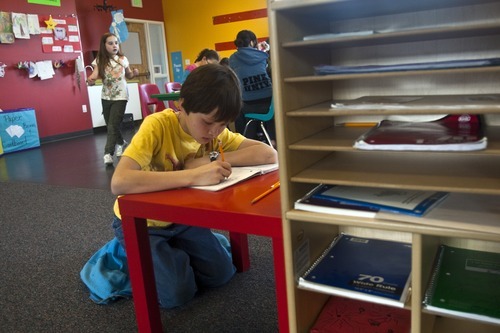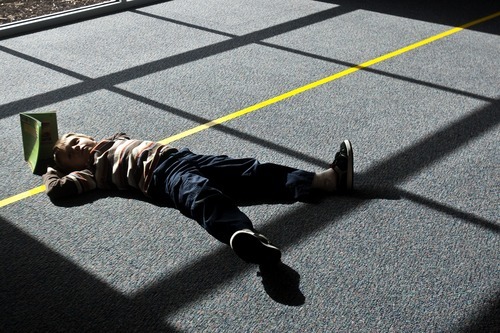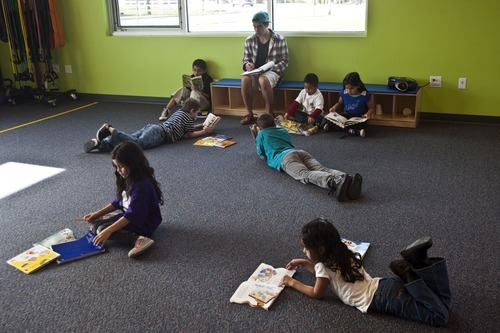This is an archived article that was published on sltrib.com in 2011, and information in the article may be outdated. It is provided only for personal research purposes and may not be reprinted.
As a single father whose wife passed away in 2008, Neptali Soto finds the YMCA Community Family Center in Taylorsville invaluable.
He drops his two children off at the center, next to their school, early each morning before his workday begins and picks them up late each afternoon after it ends. At the center, they can read, do homework, play and participate in activities such as cooking and college planning.
"For me, it's very good," Soto said of the new center, which is the result of a partnership among the YMCA, the city of Taylorsville and Granite School District. "It's very helpful."
It's the kind of partnership the Utah Afterschool Network would like to see emulated throughout the state. Statewide, at least 147,000 school-age children take care of themselves after school, according to the Afterschool Alliance. Such partnerships among cities, schools and organizations could lead to more after-school opportunities at a time when such groups are often too budget-strapped to do it themselves, said Bobbie Ikegami, with the Utah Afterschool Network.
At a recent event, the Network praised the Taylorsville center, the Community Education Partnership of West Valley City Inc. and programs in South Salt Lake and Cache Valley as examples of cities, schools and organizations working together to offer high-quality after-school opportunities.
"We can't do it alone, and I think the power is much greater if we all invest together," Ikegami said.
The Community Education Partnership of West Valley City, for example, helps to support 16 after-school programs, most of them at Granite schools. West Valley City pays $34,000 for the partnership's executive director, who said she raised about $2.5 million last year in corporate donations, grants and foundation money to help support the programs.
"We've seen behavior improving, attendance improving and grades improving," said Margaret Peterson, the partnership's executive director.
Parents, educators and city leaders are similarly happy with the Taylorsville center, which sits next to John C. Fremont Elementary School, sharing its playground and fields. The city of Taylorsville put $150,000 in federal grant money toward building the center and continues to contribute about $5,000 to $10,000 a year in federal grant money, said Taylorsville Mayor Russ Wall. The Granite School District allowed the center to be built on school property, and the YMCA runs it.
Wall said none of the three entities would have been able to create the center on its own, yet it benefits everyone.
"We all have a problem with juvenile delinquency in our cities, and these problems don't just spring up overnight," Wall said. "These are kids who are bored, who are looking for things to do."
Angela Wright, director at the facility, said the new building has allowed the YMCA to offer more activities and longer hours than when it was at the school. Parents pay different rates depending on what they can afford.
Soto's daughter, Nataly Soto, a fourth-grader at Fremont, worked on a homework assignment at the center — adding and subtracting fractions — shortly before her father picked her up on a recent day.
"It's how I get good grades," Nataly said of her time at the center, which opened in the fall and serves kids from three schools.
Many of the kids say it's the best place to be in the hours after school gets out.
"Otherwise, you'd just be home ... and when you'd go outside there'd be nobody to play with," said Fremont fifth-grader Sai Mehta. "But when you're here, everybody's here, and it's not that lonely."













